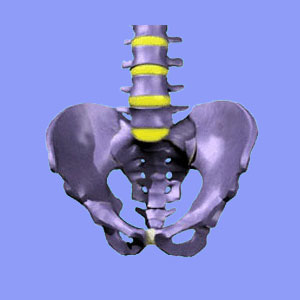
Bursitis sciatica is a particular type of back and hip pain syndrome which is diagnosed as coming from inflammation of the bursa. These structures are liquid filled components in some of the body’s joints, including the hips, and are often implicated in causing pain and related symptoms, especially as we age. However, just like many spinal aging processes, such as degenerative disc disease, bursitis can act as a diagnostic scapegoat, rather than the true underlying source of pain.
This dialog will center on bursitis and its possible association with sciatic nerve symptoms and pseudo-sciatica.
Bursitis Sciatica Definition
As we get older, the natural protective mechanisms in our joints break down. This occurs in all the joints of the anatomy, but some of the joints thought to be affected the worse include the spinal facet joints, the hip joints, the elbow joints, the knee joints and the shoulder joints.
Being diagnosed with any type of degenerative process in the joints should be no surprise or shock, especially in patients past the age of 40. Joint degeneration is normal and universal in adult humans and virtually all skeletal animals, as well.
While it is possible for a joint to suffer extreme degeneration or injury which can produce actual verified structurally-induced pain, it is not typical. Instead, some chronic joint pain concerns come about due to muscular problems or ischemia and are exacerbated by the nocebo effect of the diagnostic pronouncement. In the case of bursitis enacting sciatica-like symptoms, the structure involved in virtually always the hip joint.
Bursa-Related Pseudo-Sciatica Treatment
Bursitis should not usually produce any pain outside of the immediately hip area. However, spinal causes of sciatica can produce hip pain, as can sacroiliac joint concerns. Therefore, bursitis may exist in diagnosed patients, but is unlikely to be the actual cause of sciatica hip pain. In these patients, the spinal causation, be it a herniated disc or osteoarthritic process, may be responsible for the hip pain or a psychosomatic sciatica condition may well exist and be sourcing all the symptoms.
For sufferers who have not been able to find relief despite treatment, the latter diagnostic conclusion is usually correct. Still other patients may suffer an undiagnosed or uncorrelated disease process enacting their pain, such as diabetes.
Bursitis Sciatica Guidelines
Remember that bursitis is a term which has fallen out of favor in the medical community, since doctors know that typical bursa degeneration is normal. It is difficult to blame it as a source of significant pain, when the doctor likely has identical physical markers of the condition themselves.
Hip pain can occur to a wide range of potential reasons. In order to enjoy a lasting cure, accurate diagnosis is the most crucial factor. If you have been treated for bursitis and have not received any considerable relief, then I urge you to reconsider the diagnosis carefully. This is especially true if your hip pain exists along with sciatica and neither has improved, even though a long time has passed.
The best path is to consult with several different types of doctors and complementary caregivers. Give each a chance to provide their opinion on the true reason for the painful expression and then research their findings until one theory makes sense to you.




